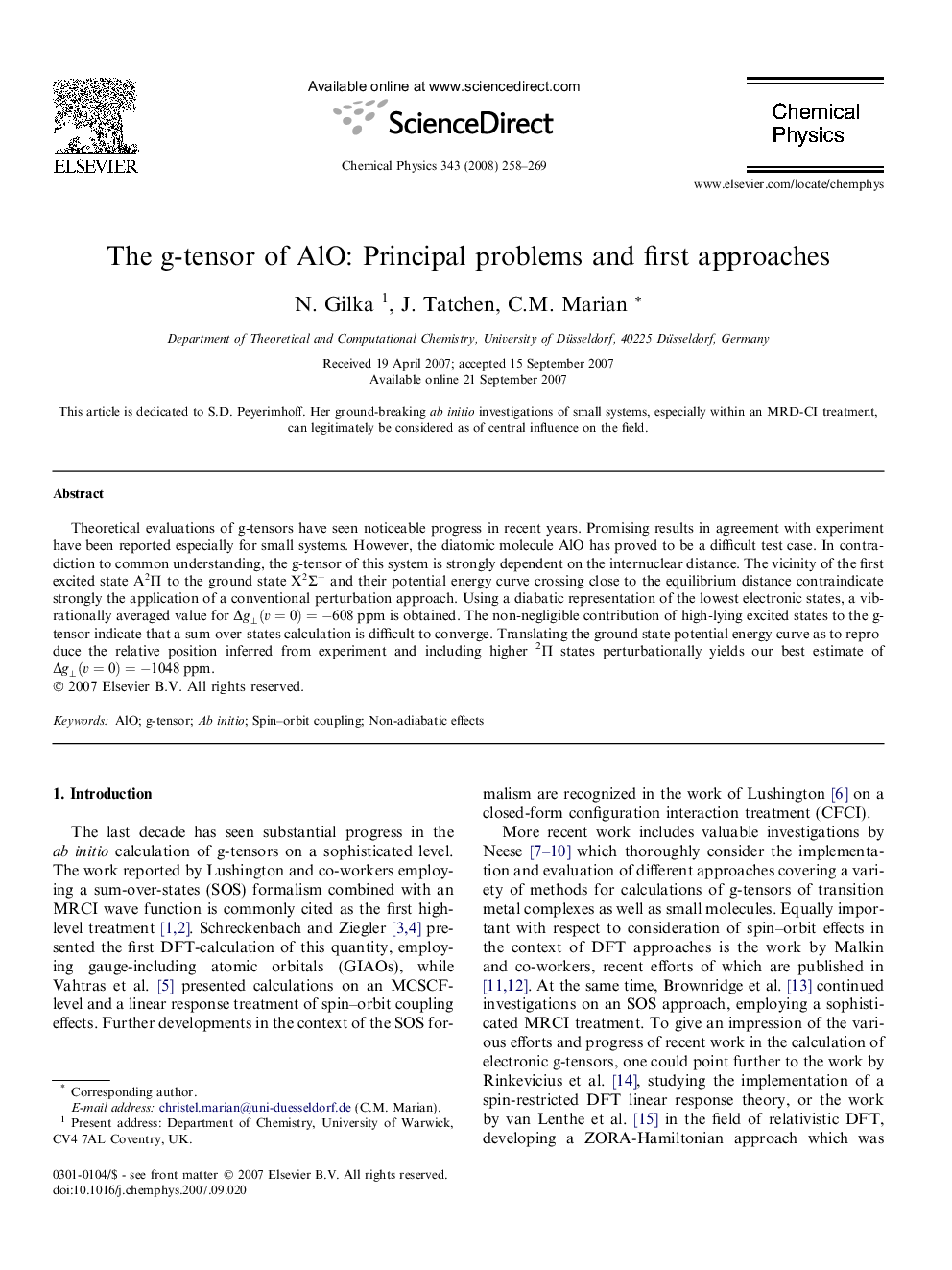| Article ID | Journal | Published Year | Pages | File Type |
|---|---|---|---|---|
| 5376245 | Chemical Physics | 2008 | 12 Pages |
Abstract
Theoretical evaluations of g-tensors have seen noticeable progress in recent years. Promising results in agreement with experiment have been reported especially for small systems. However, the diatomic molecule AlO has proved to be a difficult test case. In contradiction to common understanding, the g-tensor of this system is strongly dependent on the internuclear distance. The vicinity of the first excited state A2Î to the ground state X2Σ+ and their potential energy curve crossing close to the equilibrium distance contraindicate strongly the application of a conventional perturbation approach. Using a diabatic representation of the lowest electronic states, a vibrationally averaged value for Îgâ¥(v=0)=-608ppm is obtained. The non-negligible contribution of high-lying excited states to the g-tensor indicate that a sum-over-states calculation is difficult to converge. Translating the ground state potential energy curve as to reproduce the relative position inferred from experiment and including higher 2Î states perturbationally yields our best estimate of Îgâ¥(v=0)=-1048ppm.
Related Topics
Physical Sciences and Engineering
Chemistry
Physical and Theoretical Chemistry
Authors
N. Gilka, J. Tatchen, C.M. Marian,
